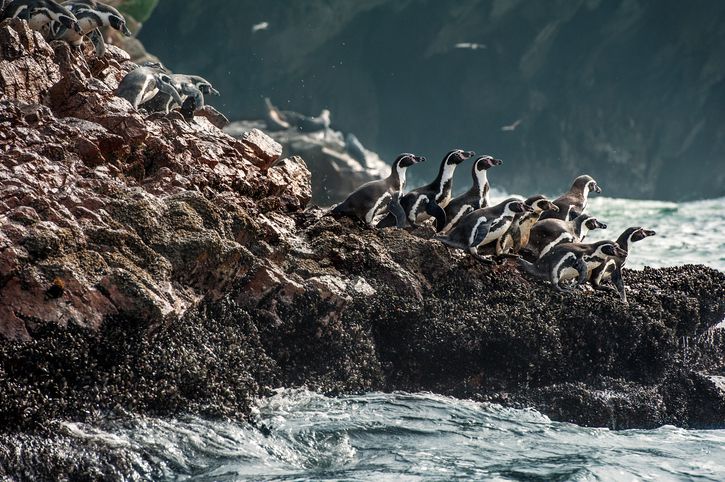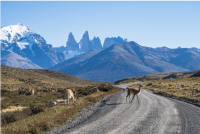While penguins are conventionally associated with habitats in Antarctica and the southernmost parts of the world, several species are known to inhabit coastal areas and islets around South America. Among the most recognizable are the endangered Galapagos penguins of the Galapagos Islands in Ecuador and Magellanic penguins, which live in colonies along the shores of Chilean and Argentine Patagonia. But lesser-known species do exist, including Humboldt penguins. Endemic to South America, they live along the coasts of Chile and Peru.
Quick facts about Humboldt penguins

- Humboldt penguins take their name from the fish-rich Humboldt Current, a stream of cold water from Antarctica that passes along the western edge of South America.
- Although estimates vary widely, scientists believe that only around 32,000 individual Humboldt penguins remain on the planet.
- The largest breeding colony is found near Chañaral in Chile and contains around 14,000 penguins.
- Humboldt penguins are medium-sized when compared with other species, weigh up to 8.8lb (4kg) and measure 26in (65cm) in height.
- They are similar in appearance to the Magellanic penguin but have a white rather than a black band around their throat.
- Humboldt penguins lay eggs at any time during the year and will make their nests in piles of guano (bird droppings) or in small caves. It is most common to see eggs being laid and hatched during the peak seasons of April through July and August through December.
- Some female penguins have been known to lay twice a year if the conditions allow.
- Scientists remain unsure as to whether this species are migratory, as penguins in colonies in Chile have been recorded as migrating up to 620-miles (1,000km) north.
- Humboldt penguins live up to 20 years.
- Since 2000, they have been registered as ‘vulnerable’ on the IUCN Red List of Threatened Species. Scientists believe this to be a result of over-harvesting of guano in their preferred breeding areas.
Where to find Humboldt penguins
The exact number of Humboldt penguin colonies located in South America is unknown, with experts suggesting that there are around 49 breeding locations along the coasts of Chile and Peru.

Humboldt penguin rookeries in Chile
Among the breeding colonies in Chile, the most significant are:
- Pan de Azúcar National Park in the Atacama Region.
- Chañaral in the Atacama Region.
- National Humboldt Penguin Reserve on Isla Choros in the Coquimbo Region.
- Cachagua Island in the Valparaiso Region, a colony that also includes Magellanic penguins and has the largest number of Humboldt penguins of all the Chilean colonies.
- Puñihuil Islets off the coast of Chiloé Island in the Los Lagos Region, which is also home to a colony of Magellanic penguins.
Humboldt penguin rookeries in Perú
The most important Humboldt penguin breeding colonies in Peru are:
- Punta San Juan in the province of Nazca, the location of the biggest colony in Peru.
- Santa Rosa Island in the province of Pisco.
- The Ballestas Islands in the province of Pisco.
- Pachacámac Islands in the province of Lima.
No comments yet
There are no comments on this post yet.






Leave a comment